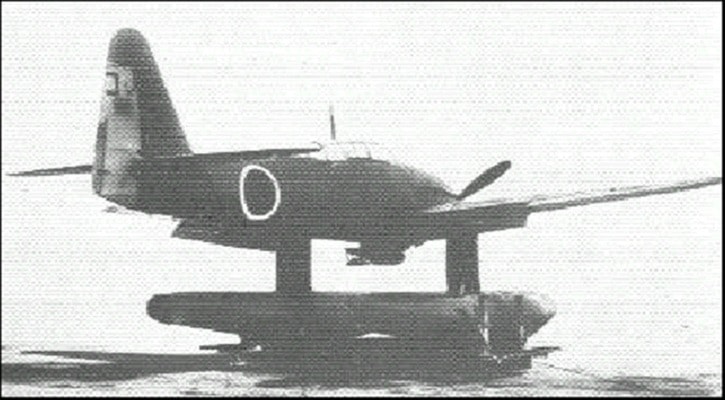Those readers who follow maritime news will likely have read last month about the rediscovery and identification of a sunken Second World War-era submarine cable repair ship off the coast of Oahu, Hawaii.
The USS Kailua made quite a few headlines when she was found half a 800 metres beneath the surface, resting largely intact despite the fact that she had been deliberately torpedoed and sunk by the American Navy in 1946.
What got less coverage was the fact that in the same immediate vicinity were two sunken Japanese submarines. One was a mini-sub and the other was one of the most remarkable advances in naval weaponry to come out of the Second World War: an I-400 class submarine.
Japan focused her wartime energies on the Pacific theatre, of course, and therefore was quite specialized in terms of what technology she advanced. Very little was spent on terrestrial combat, but air and naval innovations got a lot of attention.
There were only three I-400 class submarines ever created (I-400, I-401, I-402), and they were absolutely without par at the time.
At 122 metres in length and a surface displacement of 3,530 tons they were the largest submarines on earth until the nuclear ballistic missile subs of the 1960s, and to this day remain the only submarines in history that could carry and launch airplanes.
The I-400 class were known as the Sentoku in Japan (meaning “special submarine”) and were conceived by the same man who designed the attack on Pearl Harbour, Japanese Combined Fleet Commander-in-Chief Admiral Isoroku Yamamoto.
Design and conceptualization of this hybrid weapon began one month after Pearl Harbour, in January 1942.
Construction began in 1943, and originally 18 were commissioned. The subs development was set back with the death of Admiral Yamamoto in April of that year when his plane was shot down over the Solomon Islands by the Americans, and the commission was scaled back to 11, and then to only five by the end of the year.
Only three were completed in 1945, at which point the trajectory of the war had shifted and materials and money were drying up. Japan was losing the conflict.
The concept behind the design was to have a vessel that was not only a submarine, but also an aircraft carrier.
Yamamoto wanted the Sentoku to be capable of terrorizing not just the west coast of North America, but the more heavily populated east coast as well.
In theory, it could emerge suddenly from the sea, close to shore, and launch bombers which could attack the mainland.
It was so enormous that it carried a crew of 157 men and three Aichi M6A Seiran floatplane bombers, which were housed in a 35-metre long by three-metre diameter, water-tight hangar.
These aircraft were stored with their wings folded in, then rolled out through the enormous hangar door and launched by an 26-metre pneumatic catapult. All three planes could be launched in approximately 45 minutes.
In theory, the Seirans would then complete their bombing missions, return and land on the sea next to the submarine (they were, after all, float planes), then be picked up by an onboard hydraulic crane and returned to the sub, which would in turn disappear beneath the waves.
Perhaps even more remarkably, the Sentoku had a range of 59,545 kilometres, and could travel around the world 1.5 times before needing to be refueled. This capacity remains unmatched to this day by any diesel-electric submarine.
It also had an extremely advanced rubberized coating designed to keep it relatively undetectable by Allied sonar.
So, why isn’t the I-400 class better known? Quite simply, it’s because they never had a chance to participate in the war.
I-400 and I-401 were on their way to their first engagement at the Ulithi Atoll in August 1945, but before they arrived the war ended with the bombings of Hiroshima and Nagasaki.
Their Seiran bombers were pushed into the sea to escape American capture, but the two subs were seized on Aug. 28, 1945 and returned to Sasebo. There a number of Japanese subs were sunk, including the I-402, but I-400 and I-401 were then sailed to Hawaii for the American Navy to examine.
A year later, they were deliberately torpedoed and sank to the bottom of the sea. There was great concern that the Soviets might get their hands on this technology and use it to their advantage in the nascent Cold War.
The remains of I-401 were found again in 2005 and those of the I-400 in August 2013, close to the location of the USS Kailua.
A single Seiran plane survives today in the National Air and Space Museum in Washington D.C., the only visible remnant of a unique piece of largely forgotten naval history.
•••
Kate Humble is an historian and the Education Curator for the Maritime Museum of British Columbia. Questions and comments can be directed to: khumble@mmbc.bc.ca.
